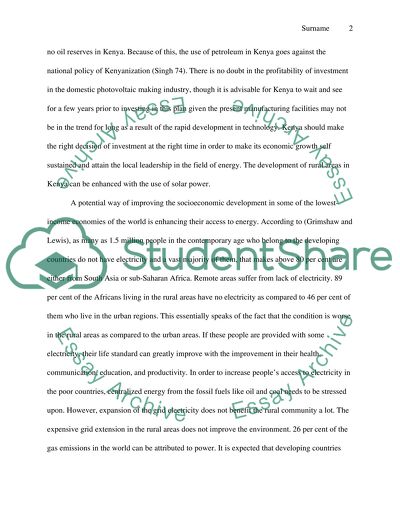Cite this document
(“Solar Power as an energy source in rural Sub-Saharan Africa Essay - 1”, n.d.)
Retrieved from https://studentshare.org/literature/1424678-solar-power-as-an-energy-source-in-rural-sub
Retrieved from https://studentshare.org/literature/1424678-solar-power-as-an-energy-source-in-rural-sub
(Solar Power As an Energy Source in Rural Sub-Saharan Africa Essay - 1)
https://studentshare.org/literature/1424678-solar-power-as-an-energy-source-in-rural-sub.
https://studentshare.org/literature/1424678-solar-power-as-an-energy-source-in-rural-sub.
“Solar Power As an Energy Source in Rural Sub-Saharan Africa Essay - 1”, n.d. https://studentshare.org/literature/1424678-solar-power-as-an-energy-source-in-rural-sub.


